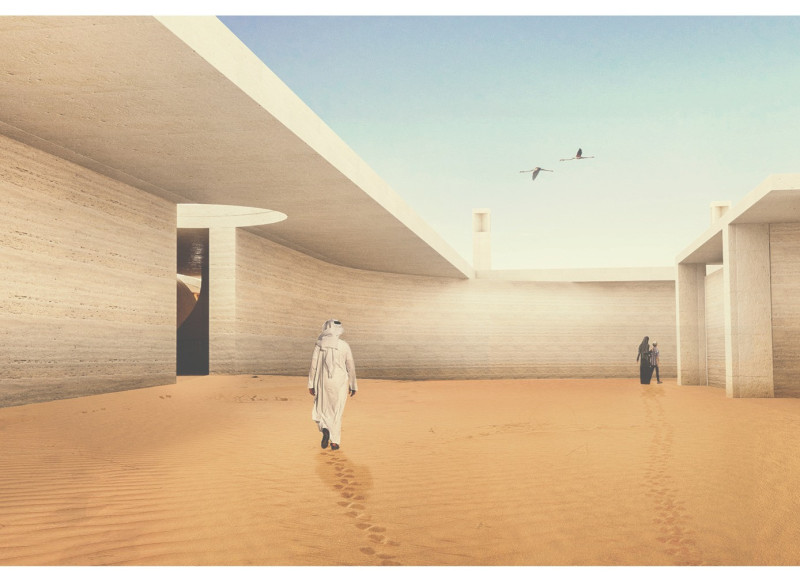5 key facts about this project
Habitat Flamingo is located near the Al Wathba Wetland, an area recognized for its ecological importance amid the arid desert. The design focuses on creating a space where visitors can connect with nature while aiming to minimize human interference in this delicate environment. The primary goal is to enhance awareness about the oasis's significance through careful architectural choices that promote harmony between the structure and its surroundings.
Protective Skin
The design employs a protective skin that serves to shield the environment from external elements. A rammed earth wall forms the main boundary of the structure, acting as both a physical barrier and a visual connection to the landscape. This wall not only blocks vehicular access but also enhances the idea of the building as a sanctuary. The choice of rammed earth emphasizes a strong relationship with the local context, providing durability while ensuring minimal impact on the environment.
Spatial Dynamics
As visitors enter, they are welcomed by a circular skylight that allows natural light to fill the interior. The layout consists of two walls and a roof panel, promoting easy movement through the exhibition area. The right wall, which is made from rammed earth, maintains a comfortable climate indoors while serving as a backdrop for the displays. The left wall, crafted from green concrete, focuses attention on the wetland, showcasing an approach to sustainability that incorporates local resources.
Interaction with Nature
The design encourages engagement between interior spaces and the natural surroundings. Cutouts in the curved wall frame views of the Al Wathba Wetland, inviting visitors to appreciate the beauty outside. As one moves to the terrace, uninterrupted views become available, allowing for direct interaction with the landscape. This arrangement enhances the experience by connecting visitors to the natural environment and deepening their understanding of it.
Social Spaces
Social interaction is a key aspect of the design, with areas dedicated to inviting pause and reflection. Benches made from reused formwork boards provide comfortable seating on the terrace, encouraging visitors to take a moment to soak in their surroundings. A parasol, also fashioned from formwork boards, offers shade and makes the space more inviting. Careful attention to these details demonstrates a commitment to sustainability while supporting a relaxed engagement with the unique ecological context.
The project integrates these elements to create a thoughtful space that fosters appreciation for nature and educates visitors on the value of the surrounding ecosystem. This careful balance of design allows the environment to be experienced fully, providing an opportunity for connection and understanding.






















































